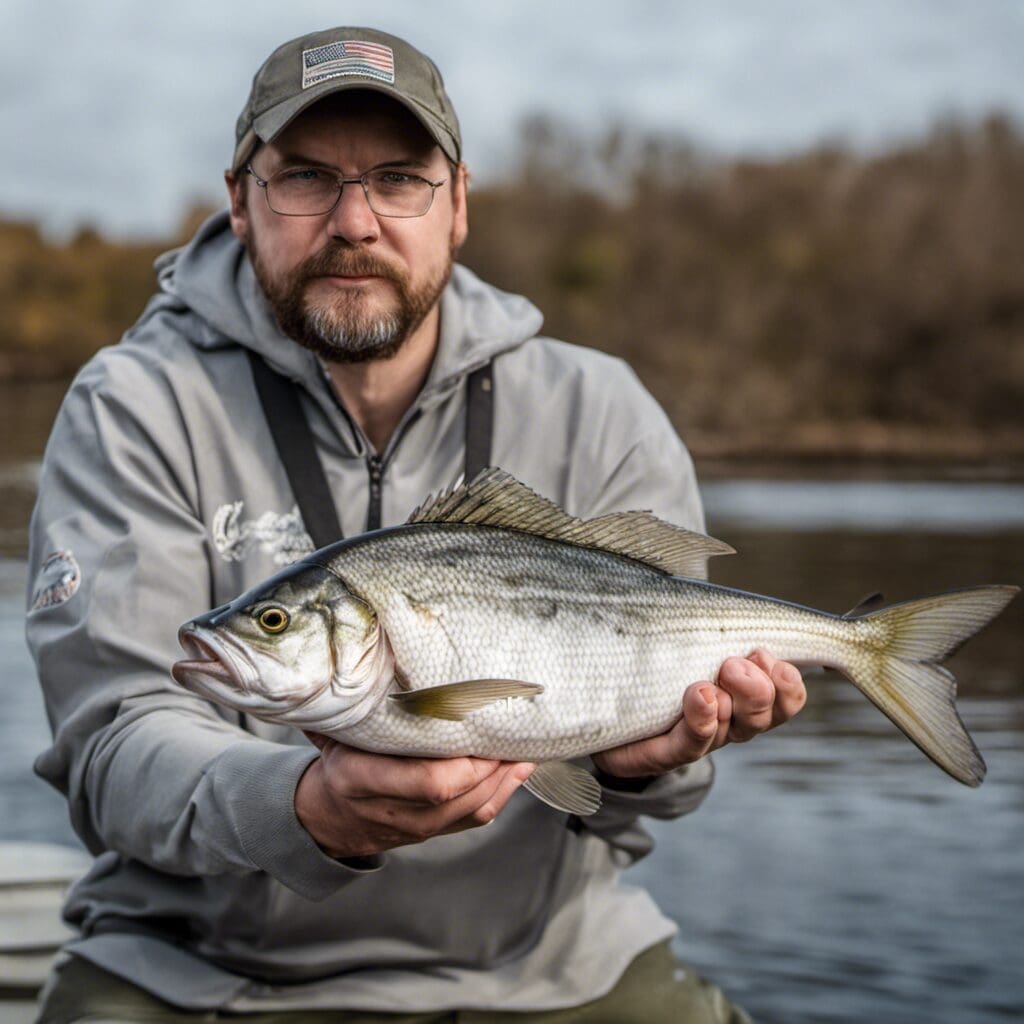Introduction
The American Gizzard Shad (Dorosoma cepedianum) is a member of the herring family (Clupeidae). This freshwater fish species is native to North America, extensively inhabiting the waters across the continent.
Conservation Status
The current conservation status of the American Gizzard Shad is listed as “Least Concern” by the International Union for the Conservation of Nature (IUCN). Although the species faces threats in certain areas from habitat destruction and pollution, its wide geographic range and high numbers ensure its survival.
Conservation Efforts
Numerous local and regional efforts are in place to monitor and preserve the health of water bodies the American Gizzard Shad inhabits. These include pollution control schemes, habitat restoration projects, and fishing regulation laws.
Statistics
Here are some key statistics about the American Gizzard Shad that you may find interesting:
| Length (Average) | Length (Range) | Weight (Average) | Weight (Range) | Average Lifespan |
|---|---|---|---|---|
| 10-14 inches | 6-20 inches | 1-2 lbs | 0.5-3 lbs | 4-6 years |
Distribution
The Gizzard Shad is predominantly found throughout waters in the eastern United States and parts of Mexico. They also inhabit parts of Canada. While not considered migratory, gizzard shads will move to warmer waters during winter months.
Habitats
Water Type
Being versatile by nature, Gizzard Shads can be found in a variety of water types including fresh water lakes, rivers as well as brackish water estuaries.
Depth and Temperature Range
Able to tolerate a wide range of temperatures, these fish generally prefer deeper, cooler waters during summer months, and shallower, warmer waters during the winter.
When and Where to See
This species of shad is most active during fall and spring, and can often be seen schooling near the surface of the water during early morning and late afternoon.
Best Fishing Locations
Gizzard Shad are widely distributed throughout North America. Here are some top fishing locations known for their high Gizzard Shad populations:
- Lake Erie, Ontario, Canada
- Lake Superior, Michigan, USA
- Ohio River, Ohio, USA
- Mississippi River, Louisiana, USA
- Columbia River, Washington, USA
- Hudson River, New York, USA
How to Catch
Using a light tackle or cast net can help to successfully catch Gizzard Shad. They react well to smaller bait or lures. Prime fishing times are during pre-dawn and dusk hours, especially during the spring and fall months.
Identification Guide
Recognizable by its silver color, the Gizzard Shad has a deep body with a sharply pointed, projecting snout and a single dorsal fin. It can be distinguished from similar species by its long, thread-like last dorsal ray.
Culinary Value
Although not highly sought for their taste, Gizzard Shad can be used to create fish meal, pet food or as bait fish. It is not commonly consumed by humans.
Behavior
Gizzard Shad are known for their voracious feeding habits, including a diet of zooplankton, phytoplankton and detritus. They are a schooling fish, often found in large groups.
Predators and Threats
Natural predators include larger fish species and birds. Human-induced threats are primarily pollution and habitat loss.
Cultural/Historical Significance
Gizzard Shad are considered an important part of the ecosystem, providing a valuable food source for many sport fish species. They contribute greatly to increasing these sought-after species’ populations, thereby boosting the sports fishing industry.
References and Further Reading
For further information, you may refer to some of these sources:
- FishBase
- IUCN Red List

